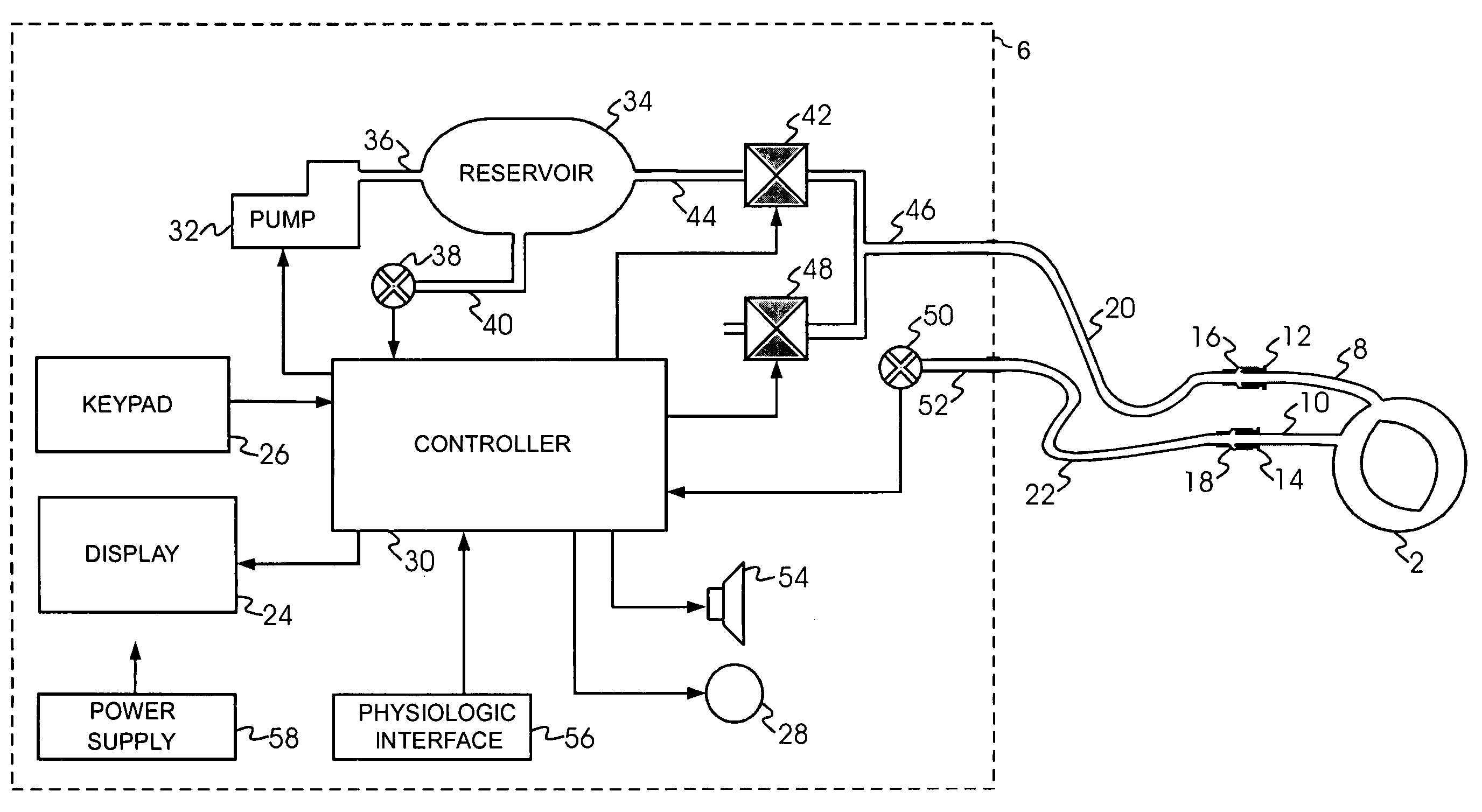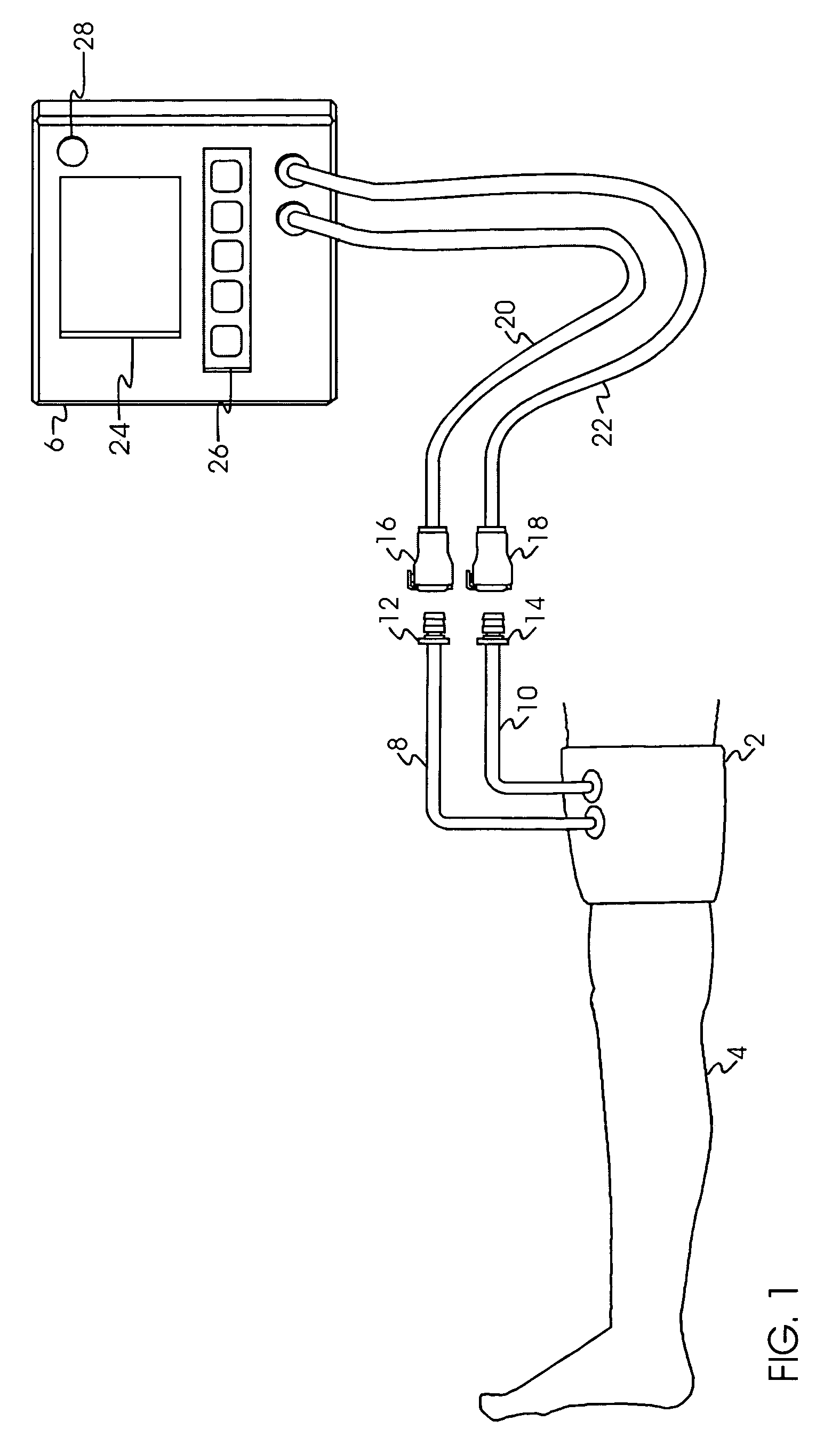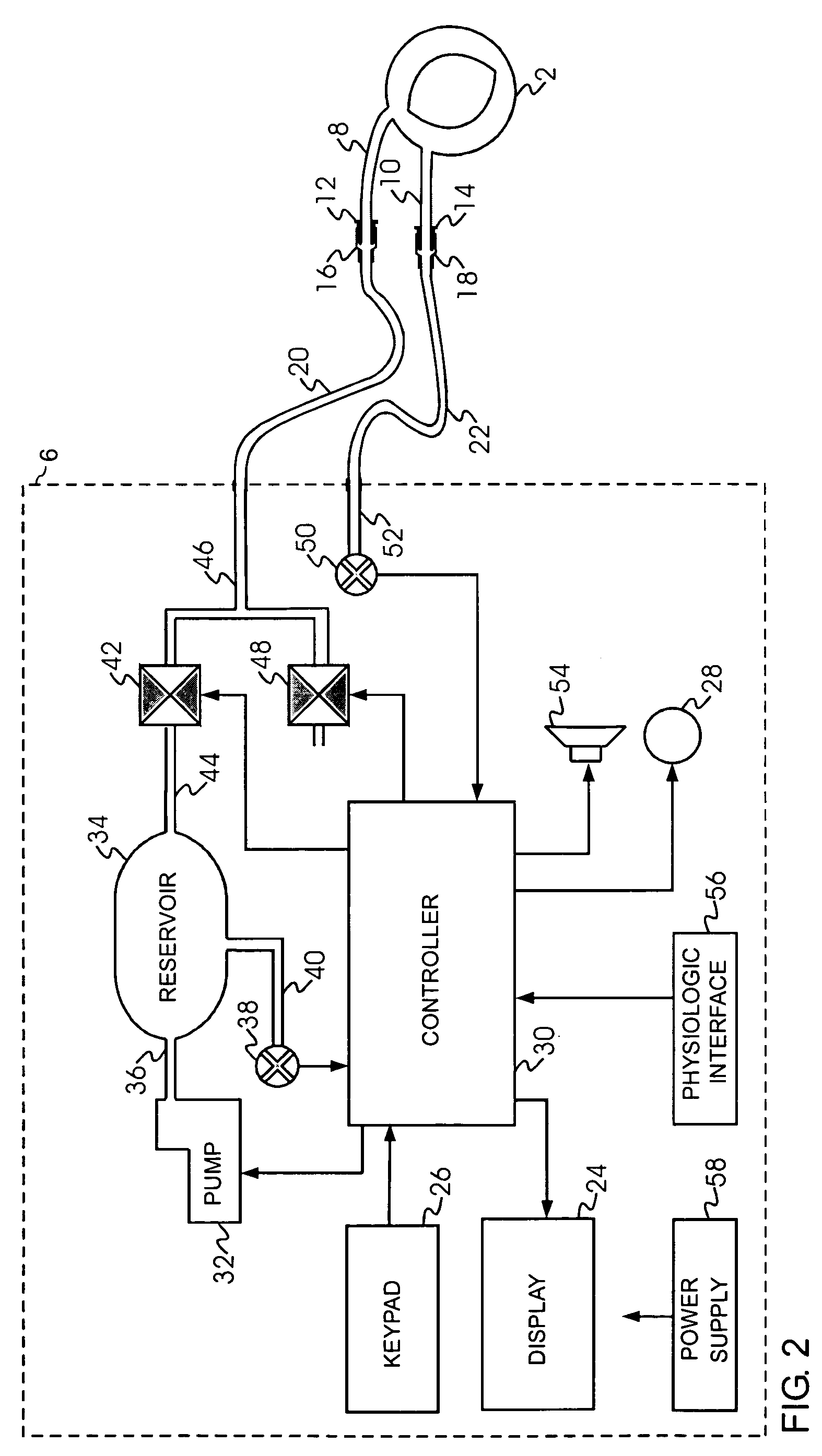Occlusion detector for dual-port surgical tourniquet systems
a technology of occlusion detector and tourniquet system, which is applied in the field of pneumatic tourniquet system, can solve the problems of affecting the accuracy of the sensed cuff pressure, and the accuracy of pressure regulation of the cuff, and the hazard of all pneumatic surgical tourniquet system, and the possibility of occlusion or blockage of the pneumatic passageway between the tourniquet instrument and the cuff, or within th
- Summary
- Abstract
- Description
- Claims
- Application Information
AI Technical Summary
Benefits of technology
Problems solved by technology
Method used
Image
Examples
Embodiment Construction
[0020]The embodiment illustrated is not intended to be exhaustive or limit the invention to the precise form disclosed. It is chosen and described in order to explain the principles of the invention and its application and practical use, and thereby enable others skilled in the art to utilize the invention.
[0021]FIG. 1 shows pressurizing cuff 2 applied to patient limb 4 and pneumatically connectable to instrument 6. The inflatable portion of pressurizing cuff 2 has two separate pneumatic connections and is generally similar in design and construction to the cuffs described by McEwen in U.S. Pat. No. 5,741,295, U.S. Pat. No. 5,649,954, U.S. Pat. No. 5,484,831 and by Robinette-Lehman in U.S. Pat. No. 4,635,635. Cuff 2 is adapted for use in a sterile surgical field in an operating room environment by being formed of materials that can withstand, and that can be sterilized by, techniques normally used to sterilize medical devices to a level of sterility that allows them to be safely use...
PUM
 Login to View More
Login to View More Abstract
Description
Claims
Application Information
 Login to View More
Login to View More - R&D
- Intellectual Property
- Life Sciences
- Materials
- Tech Scout
- Unparalleled Data Quality
- Higher Quality Content
- 60% Fewer Hallucinations
Browse by: Latest US Patents, China's latest patents, Technical Efficacy Thesaurus, Application Domain, Technology Topic, Popular Technical Reports.
© 2025 PatSnap. All rights reserved.Legal|Privacy policy|Modern Slavery Act Transparency Statement|Sitemap|About US| Contact US: help@patsnap.com



